Modern veterinary medicine offers an increasing number of laser therapy devices, each one of which seeks to provide effective treatment options as simply and effectively as possible. Due to market demand, many of these devices often create protocols on the device itself so veterinary professionals can apply the therapy without the need for specific training.
However, during this process to create increasingly more effective protocols and shorter treatment times for veterinary colleagues, one of the most important options is often overlooked: the treatment techniques and application modes.
There are two treatment techniques: the spot technique and the scan technique.
The first basically divides the treatment area in to specific points and each one of these points (or spots) should receive the same dose to guarantee optimal treatment. Furthermore, Dr. Enwemeka recommends using this technique sequentially rather than randomly, the latter of which may lead to mistakes and impact the results obtained. This spot technique is recommended for IIIB laser devices and for low-power class IV laser devices (laser devices can be categorised according to their power rating, with IIIB lasers having a maximum power rating of 0.5W and class IV lasers surpassing 0.5W).
The scan treatment technique is characterised by a treatment head that is in constant motion, covering the entire treatment area. The speed of the scan will depend on the characteristics of the device, and the manufacturer should train users on the application of its treatments. When using this technique, it is important to keep the treatment head perpendicular to the treatment area and maintain a constant scan speed. Otherwise, variables will be created that may impact the results. This is the application technique of choice for class IV lasers.
In terms of application mode, treatment can be applied in contact mode or non-contact mode.
Contact mode is the most highly recommended by numerous authors, including Dr. Enwemeka in the article published in 2009. Furthermore, various other articles have been published that demonstrate the benefits of this technique, which is characterised by having the treatment head in contact with the surface of the patient. It is the most highly recommended technique because it prevents any loss of power through reflection and is the most suitable mode for the majority of situations. To improve contact mode, numerous authors recommend applying pressure (if the patient permits this) in order to reach deeper tissues.
Non-contact mode is characterised by holding the treatment head away from the surface of the patient. Even in situations where contact mode might be the most suitable, circumstances can arise that can make non-contact mode more advisable. Generally speaking, non-contact mode is recommended for dermatology issues, intra-surgical situations and acute processes or hyperalgesia in which the patient cannot tolerate contact mode.
It is worth explaining these two modes further. When thinking of a functioning laser and considering that the energy applied to the body through laser therapy comes in the form of photons with certain wavelength characteristics, any light we see consists of photons intended for application to the body. If it is applied in non-contact mode, more of this light can be observed. This means that reflection is taking place; i.e. some of the photons are reflecting off the surface of the patient, with those photons and, by extension, their energy being lost.
If it is applied in contact mode, the light is less visible and that means it is passing straight to the patient. As can be seen in the videos, it is very important to consider the use of contact or non-contact mode.
Seeing is believing!
Book a demo now to learn how DoctorVet works!
Devices are available that come with treatment heads to optimise both contact mode and non-contact mode so as to prevent reflection. Although used in contact mode (i.e., touching the surface of the patient), some treatment heads do not actually apply contact mode because there is a distance between the exit point of the beam and the surface of the patient.
These treatment heads are characterised by visible light even when they are in contact with the patient. Remember that this means energy is being lost.
The purpose of treatment heads is to improve the scan technique in contact mode. On the other hand, the treatment heads developed for non-contact mode seek to focus the beam and prevent photon loss as much as possible.
Hence, recommendation of the scan or spot techniques will depend on the characteristics of the device. Furthermore, contact mode is the most highly recommended due to the reduced reflection, while non-contact mode is recommended for dermatology issues.
DoctorVet is a class IV laser device with an average power rating of 8W and a peak power rating of 16W. This means that the scan treatment technique is recommended. Contact mode is also more highly recommended. Hence why it comes with the massage treatment head (image of a massage treatment head) for the scan application technique in contact mode. The scan treatment head is provided in order to prevent as much reflection as possible in non-contact mode.
The scan speed will depend on the characteristics of the device and the treatment heads used, which is why DoctorVet trains veterinary professionals on the use of the scan technique and its speed based on the treatment head being used.
DoctorVet bases its protocols and application techniques on the latest science in the field of laser therapy.
Would you like to know more? Do not hesitate to get in touch with us. The entire DoctorVet team will be glad to answer any questions you might have.
“Science is more than a body of knowledge: it is a way of thinking”. (Carl Sagan)

Via dell’Impresa, 1
36040 Brendola (VI)
VAT 02558810244
C.R. VI 240226
© Copyright 2016-2021 LAMBDA S.p.A. | Privacy Policy